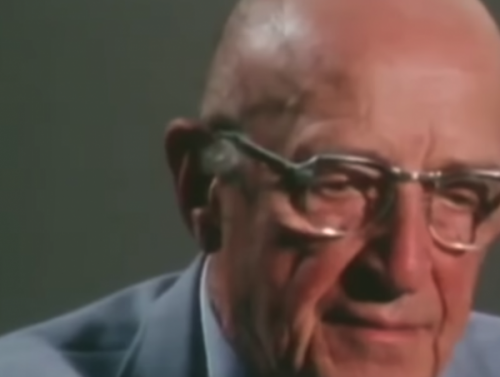A Brief History of Psychotherapy

Psychotherapy is a very new branch of psychology. In fact, it didn’t really even exist until the last quarter of the 19th century, when people finally stopped believing that mental illnesses were caused by supernatural forces. That being said, society has always been interested in explaining human phenomena that have no clear biological cause. If you want to trace the history of psychotherapy to the very beginning, you might look at tribal societies that talked about the soul present in all natural objects. They believed in animism and they thought that people got sick because they were possessed by a strange soul. Consequently, their curative methods were ceremonies to restore lost souls, exorcisms, confessions, and incubations.
Later, in Greece and the ancient world, you find the origin of contemporary psychotherapy and rational thought, as well as philosophy and medicine. In this context, Aristotle described the different uses of the word “spell”. It was a persuasive word that caused a change in human beings.
Plato argued that beautiful speech had benefits for the body and soul. Some of his observations about passions, dreams, and the unconscious seem to be precursors to Freudian thinking.
Ancient philosophers
You can’t talk about the history of psychotherapy without talking about Hippocrates and Galen.
- The Hippocratic Corpus is one of the important milestones of modern medicines. Hippocrates related diseases with the state of the body and proposed four humors associated with temperament: blood, phlegm, yellow bile, and black bile.
- Galen further developed Hippocrates’ theories and made a distinction between preternatural, natural, and unnatural things.

From the Middle Ages to a modern definition
In the Middle Ages, the church considered mental illness the product of the devil’s will. Confession was the way to healing. Later, during the Enlightenment, authors such as Pinel introduced the idea of moral treatment of mental illness. The concept of humanizing patients and taking an optimistic view of the disease became more popular.
As we mentioned above, psychotherapy originated in the 19th century. Cobbe uses the term “psychotherapist” in an article in which he defends the role of faith in healing. During this stage, the crucial element was isolating diseases that didn’t involve physical injury. On the other hand, people were refining the technique of hypnosis and saw it as an acceptable procedure. Not only acceptable, in fact, but the treatment of choice.
The origin of hypnosis is Van Helmont’s animal magnetism. Franz Freidrich Anton Mesmer was its main representative. This theory argued that a physical fluid filled the universe, and an imbalance in the fluid is what caused illness. The cure consisted of restoring balance to the fluid.
People who adhered to this theory called themselves “fluidists” and its detractors were “animists”. The Marquis of Puysegur was an animist and used hypnosis as a kind of artificial sleep that allowed the patient to recover memories they couldn’t otherwise recall.
The Nancy School
Later, Braid coined the phrase hypnosis and defined it as a nervous sleep. Thanks to these advances and the work of Liebault and Bernheim, the Nancy School was born. They abandoned hypnosis in favor of helping the patient reach that same state while awake. That was when people started using the term “psychotherapy”.
In 1895, a Viennese neurologist named Sigmund Freud published Studies on Hysteria with physician Josef Breuer. In their work, they describe the Cathartic Method, which they developed and applied to a patient named Ana O. Later, they developed free association, which is probably the method you picture when you think about psychotherapy: the patient lying on a couch, talking to the therapist about some aspect of their life.
Recent history of psychotherapy
After psychoanalysis, a slew of alternative therapeutic methods emerged on the scene. Carl Rogers developed one that was more person-centered. Later, behaviorism offered a different perspective on psychological disorders. It wasn’t until the 60s and 70s, however, that authors such as Skinner and Wolpe established the foundations for behavioral therapy.

Other models such as Maslow’s humanist psychology and his hierarchy of needs and the systemic model, also emerged around this time. Therapists most often applied these particular theories during family therapy. Learning-based behavioral theories also gave rise to cognitive models developed by Beck, Ellis, Mahoney, and Meichembaum.
Lastly, in the 90s, third-generation therapies (or contextual therapies) become popular. They proposed returning to radical behaviorism, keeping in mind the cognitive side, but without trying to modify its content like the rationalists. Instead, the goal is to change the relationship that the patient has with the content.
Because it’s impossible to establish meaningful differences between different therapeutic methods and theories, some believe that you have to consider them all as equal. This conjecture is called The Dodo Bird Verdict and is somewhat controversial among psychotherapists. There’s no doubt, however, that any kind of psychotherapy is more effective than no treatment at all.
Psychotherapy is a very new branch of psychology. In fact, it didn’t really even exist until the last quarter of the 19th century, when people finally stopped believing that mental illnesses were caused by supernatural forces. That being said, society has always been interested in explaining human phenomena that have no clear biological cause. If you want to trace the history of psychotherapy to the very beginning, you might look at tribal societies that talked about the soul present in all natural objects. They believed in animism and they thought that people got sick because they were possessed by a strange soul. Consequently, their curative methods were ceremonies to restore lost souls, exorcisms, confessions, and incubations.
Later, in Greece and the ancient world, you find the origin of contemporary psychotherapy and rational thought, as well as philosophy and medicine. In this context, Aristotle described the different uses of the word “spell”. It was a persuasive word that caused a change in human beings.
Plato argued that beautiful speech had benefits for the body and soul. Some of his observations about passions, dreams, and the unconscious seem to be precursors to Freudian thinking.
Ancient philosophers
You can’t talk about the history of psychotherapy without talking about Hippocrates and Galen.
- The Hippocratic Corpus is one of the important milestones of modern medicines. Hippocrates related diseases with the state of the body and proposed four humors associated with temperament: blood, phlegm, yellow bile, and black bile.
- Galen further developed Hippocrates’ theories and made a distinction between preternatural, natural, and unnatural things.

From the Middle Ages to a modern definition
In the Middle Ages, the church considered mental illness the product of the devil’s will. Confession was the way to healing. Later, during the Enlightenment, authors such as Pinel introduced the idea of moral treatment of mental illness. The concept of humanizing patients and taking an optimistic view of the disease became more popular.
As we mentioned above, psychotherapy originated in the 19th century. Cobbe uses the term “psychotherapist” in an article in which he defends the role of faith in healing. During this stage, the crucial element was isolating diseases that didn’t involve physical injury. On the other hand, people were refining the technique of hypnosis and saw it as an acceptable procedure. Not only acceptable, in fact, but the treatment of choice.
The origin of hypnosis is Van Helmont’s animal magnetism. Franz Freidrich Anton Mesmer was its main representative. This theory argued that a physical fluid filled the universe, and an imbalance in the fluid is what caused illness. The cure consisted of restoring balance to the fluid.
People who adhered to this theory called themselves “fluidists” and its detractors were “animists”. The Marquis of Puysegur was an animist and used hypnosis as a kind of artificial sleep that allowed the patient to recover memories they couldn’t otherwise recall.
The Nancy School
Later, Braid coined the phrase hypnosis and defined it as a nervous sleep. Thanks to these advances and the work of Liebault and Bernheim, the Nancy School was born. They abandoned hypnosis in favor of helping the patient reach that same state while awake. That was when people started using the term “psychotherapy”.
In 1895, a Viennese neurologist named Sigmund Freud published Studies on Hysteria with physician Josef Breuer. In their work, they describe the Cathartic Method, which they developed and applied to a patient named Ana O. Later, they developed free association, which is probably the method you picture when you think about psychotherapy: the patient lying on a couch, talking to the therapist about some aspect of their life.
Recent history of psychotherapy
After psychoanalysis, a slew of alternative therapeutic methods emerged on the scene. Carl Rogers developed one that was more person-centered. Later, behaviorism offered a different perspective on psychological disorders. It wasn’t until the 60s and 70s, however, that authors such as Skinner and Wolpe established the foundations for behavioral therapy.

Other models such as Maslow’s humanist psychology and his hierarchy of needs and the systemic model, also emerged around this time. Therapists most often applied these particular theories during family therapy. Learning-based behavioral theories also gave rise to cognitive models developed by Beck, Ellis, Mahoney, and Meichembaum.
Lastly, in the 90s, third-generation therapies (or contextual therapies) become popular. They proposed returning to radical behaviorism, keeping in mind the cognitive side, but without trying to modify its content like the rationalists. Instead, the goal is to change the relationship that the patient has with the content.
Because it’s impossible to establish meaningful differences between different therapeutic methods and theories, some believe that you have to consider them all as equal. This conjecture is called The Dodo Bird Verdict and is somewhat controversial among psychotherapists. There’s no doubt, however, that any kind of psychotherapy is more effective than no treatment at all.
All cited sources were thoroughly reviewed by our team to ensure their quality, reliability, currency, and validity. The bibliography of this article was considered reliable and of academic or scientific accuracy.
- Feixas, G. y Miró, T. (2004): Aproximaciones a la psicoterapia. Paidós. Barcelona
This text is provided for informational purposes only and does not replace consultation with a professional. If in doubt, consult your specialist.







